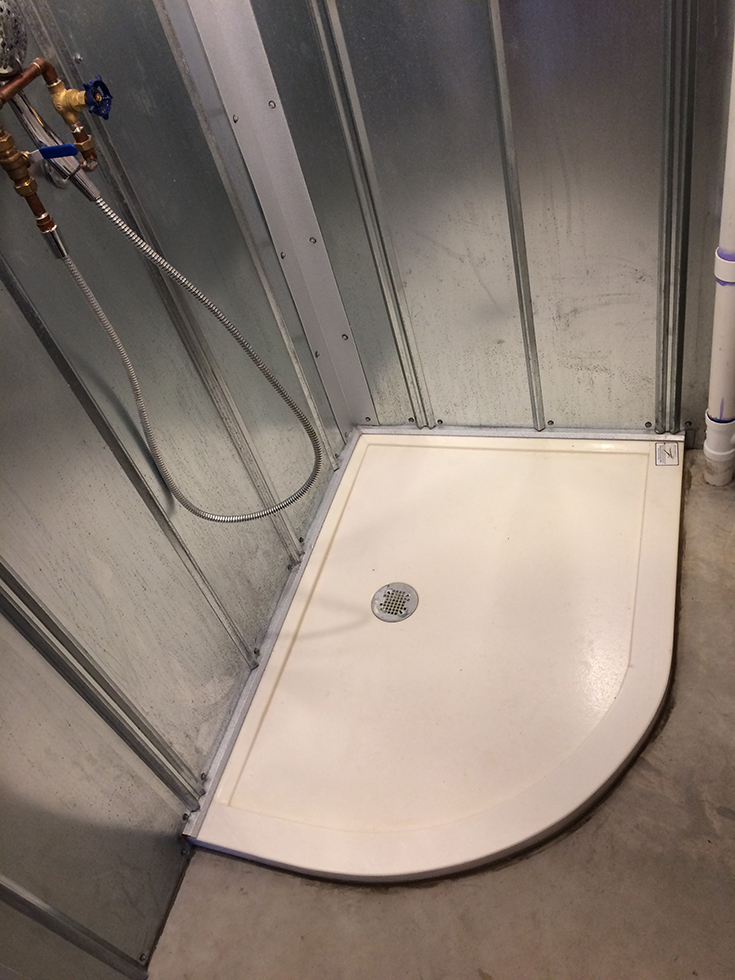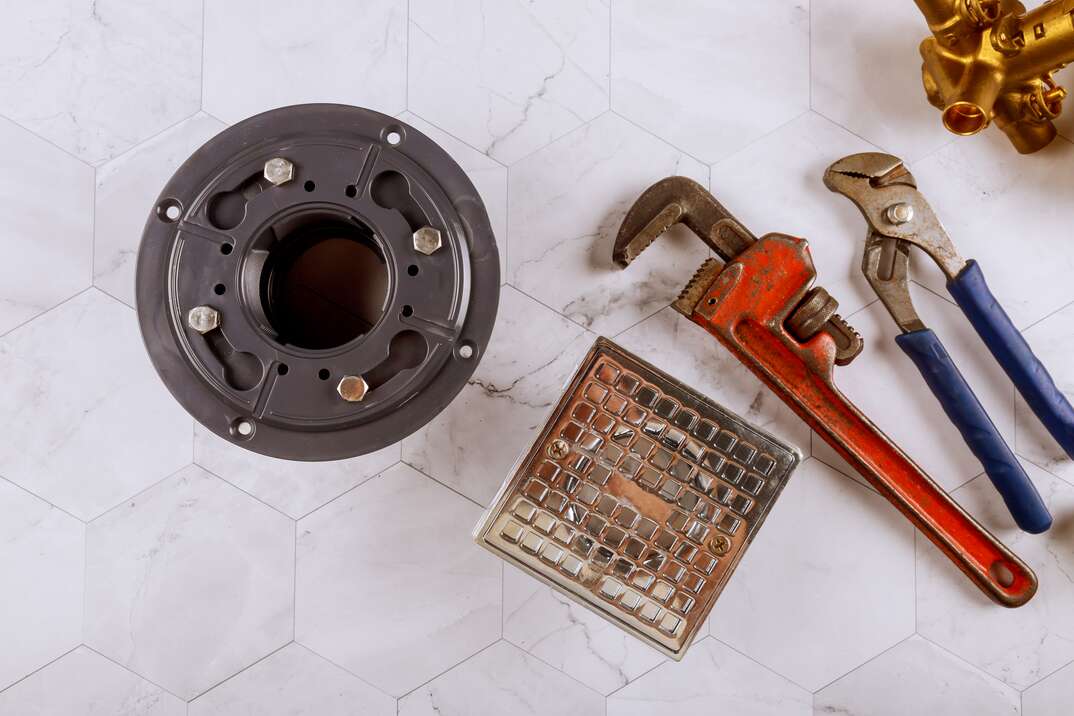Just how do you feel in relation to Simple Steps for Installing a Shower Base?

Upgrading a restroom is among the a lot more popular residence enhancement tasks. Handling the plumbing for draining your shower can be exceedingly straightforward unless you overdo it.
Handling Your Own Shower Drain Setup Project
You can literally build an enthusiast for your new shower, yet you actually need to consider it. Do you really wish to enter into the complications of obtaining the sloping proper, and also making sure every facet of it is water resistant? And I suggest every facet! It is a lot easier to just purchase a pre-cast collector online or at your neighborhood copyright, Residence Depot or hardware store. Structure one could seem like an excellent concept, but you will possibly feel differently after a couple of hrs.
Regardless of exactly how you go about obtaining a pan, you need to strive to use one that has the drainpipe situated in the exact same place as the initial pan. Relocating the drainpipe pipes can be a job, especially if the building contractor utilized an unique framework structure. If you are determined to relocate the drain, you are mosting likely to have to reduce the pipeline or lengthen it, which might imply destroying big chunks of the flooring. Put another way, you are mosting likely to be looking at a multiple weekend break project.
Thinking we have our drain lined up, the real hook up is relatively straightforward. The drain pipeline ought to be encountering vertical approximately the collector. It will certainly often appear like a "U", which suggests it serves as a cleanout to maintain unpleasant smells from returning up from the drainpipe. To link the drainpipe, you are going to produce a water limited connection in between a drainpipe cap on the top of the pan as well as the water drainage pipe. Solutions differ, but you are normally mosting likely to do this by placing a combining piece on the top of the drain pipeline. This is after that covered with gaskets and actually screwed right into the drainpipe cap. The drainpipe cap should work as a locknut, to wit, it screws straight onto the combining.
The complicated part of this process is getting your drain cap to match a water tight position in the pan. This is achieved by withdrawing the drainpipe cap once you are sure whatever meshes. Then, you placed plumbings putty around the bottom of the cap and afterwards screw it back on. The putty should create a tight seal between the cap as well as the shower frying pan, which maintains water from trickling under it as well as right into the mounting under the shower.
Undoubtedly, shower room showers come in a wide array of designs nowadays. If you purchase an enthusiast, they generally come with plumbing instructions or the shop can note anything unusual you need to understand. It appears intricate, but is generally pretty simple. Have fun!
Whether you are a bathtub or shower person, most individuals try to find shower just choices when getting a residence. This straightforward fact means greater than a few homeowners invest a weekend upgrading or mounting showers in their washrooms. The good news is for you, it is a rather easy process.
An enthusiast or pan refers to the straight surface situated at the end of the shower. The collection agency generally consists of a non-slip surface a little banked towards the facility or any place the drainpipe is located. Integrated with three to four inch wall surfaces around the side, the goal of your shower water drainage plumbing is to get the water to flow to and down the drain.
How to Install or Replace a Shower Drain
The type of shower drain you install depends on several factors, including the flooring material and your particular scenario. Below are two popular options when it comes to installing a shower drain.
How to Install a Shower Drain on a Prefabricated Shower Pan
When renovating a bathroom, a new shower drain should always be part of the process. A drain assembly — which consists of a drain body, strainer, compression gasket, compression nut, compression wrench, drain nut, fiber gasket and rubber gasket — will cost you between $7 and $60 at your nearest hardware store. This is the piece you will attach to a preformed shower pan, a one-piece base that is usually made from acrylic and reinforced with fiberglass.
You’ll need some plumber’s putty to act as a sealant between the shower pan and the drain assembly. Roll the putty into a half-inch bead and wrap it around the underside of the drain body flange. Insert the drain body through the hole of the shower pan from the top and press down firmly (do not twist) to form an even seal.
At the bottom of the shower pan, place the rubber gasket and fiber gasket (in that order) onto the drain body. Insert the drain nut and tighten it with your hand. When it gets too hard to turn, use a set of adjustable pliers or a wrench to tighten it all the way through. Use your index finger to remove any excess putty from the top of the drain.
For this part, get a buddy to help you lower the shower pan onto the shower base. The shower base, in this scenario, is the substructure of the shower’s subfloor. It will have a drain hole with a 2-inch drain pipe located in the middle. The drainpipe should be positioned in the center of the drain body as you’re lowering the shower pan onto the shower base.
Once this is done, grab the compression gasket and insert it from the top of the hole, bevel side up, making sure that it fits in the space between the drain body and pipe. Push it down until it sets at the bottom.
Next, thread the compression nut over the drain pipe. Insert the compression wrench into the compression nut and tighten with a screwdriver. Finish the shower drain install by snapping strainer or drain cover onto the drain body.
How to Install a Shower Drain for a Tile Floor
Since tiles are square (in most cases), you will need a drain assembly with a square strainer. There are essentially three parts to a tile floor assembly: the drain barrel (where the strainer is attached), drain body and clamping ring.
Begin installing the shower drain after you’ve finished installing the subfloor and drain pipe. Fit the drain body over the drainpipe, ensuring that the flange is resting on the subfloor. Use solvent cement to bond them together.
Next comes the bottom mortar bed. Be sure to cover the drain body with a clean rag before you apply it so the drainpipe remains clean. Lay down the layer of mortar starting from the wall. Make sure there is a slope every ¼ inch per foot, all the way to the drain’s opening. The mortar bed should be flush with the drain body’s flange.
Wait for the mortar bed to dry. Afterward, install a pan liner on top of it. This is a waterproof membrane that catches any water that seeps through the mortar bed and directs it towards the drain. Cut a hole in the membrane around the drain hole and around the inner and outer mounting holes of the drain body. Screw some bolts into the outer mounting holes to secure the pan liner and drain body to the subfloor.
Place the clamping ring above the membrane. Align its mounting holes with the ones on the drain body and screw it in. This will sandwich the membrane between the drain body and the clamping ring. Fill the shower floor with 2 to 3 inches of water to check if the membrane has any leaks.
If there are no leaks, screw the drain barrel into the clamping ring; stop when it reaches the height you want. Leave at least 1 inch of space between the drain body and the top of the drain barrel. Apply another mortar bed layer on top of the pan membrane and finish installing the tile floor once it’s dry.
How to Replace a Shower Drain from Underneath
If the shower drain replacement is on a prefabricated shower pan, you have to go at it from the bottom. This will allow you to effectively take the drain assembly apart. Be sure to turn off the electricity in the area you’ll be working in before you begin. Then, use a flat screwdriver to pop the strainer out of the drain body to expose the compression nut. Insert your compression wrench into the compression nut and turn it counterclockwise with a screwdriver to unscrew it.
Using a combination of a utility knife and drywall saw, cut a rectangular hole in the ceiling beneath the drain. Make sure the hole is big enough to fit adjustable pliers and is along the joist so you have something to support the new drywall when patching it up. Use the adjustable pliers to loosen the drain until you can remove the rest of it with your hand. Follow that up by removing the rubber and fiber gaskets as well.
If you see that the drainpipe is welded or glued to a U-shaped pipe (also called the P-trap), you'll need to cut it. This will make it easier to push out the drain pipe and cut out the drain body. However, you'll need to know how to replace a shower drain trap as well once you cut it. Without the P-trap, sewer gases can travel into your home through the drain line. In addition to the unpleasant smell, long-term exposure to this gas can be harmful.
Install a new drainpipe in the shower base and repeat the steps on how to install a shower drain on a prefabricated shower pan. Repeat the above steps for installation — from inserting the drain body, to tightening the drain nut, to snapping the drain cover on top of the drain. However, since the shower pan is already on the floor, you don’t have to struggle with lowering and positioning it.
Assemble a new P-trap by gluing its pieces together and gluing the assembly to the drainpipe. Turn on the water and dash back downstairs to see if there are any leaks. If there are no leaks, patch up the drywall.
How to Replace a Shower Drain from the Top
When performing a shower drain replacement on tile flooring, you don’t need to go underneath. Start by unscrewing the drain barrel, cleaning the drainpipe and covering the hole to prevent debris from falling in it. Then, carefully pry out the tiles around the shower drain and chisel that area until the subfloor and mounting bolts are exposed. Unscrew the bolts and remove the clamping ring and drain body.
Install the new tile floor assembly while patching up the membrane and mortar bed. Don’t forget to check for leaks when you’re done. To patch the membrane, cut a new piece of membrane to fit the area you destroyed. Make holes for the drain and the mounting holes of the drain body. Apply caulk along the chiseled area and apply the patch. Leave the caulk to dry and patch the mortar bed with deck mud.
https://www.homeserve.com/en-us/blog/how-to/shower-drain-installation/

I am just very taken with How to Choose the Best Drain for Your Shower and I hope you liked my piece. Are you aware of another individual who is very much interested in the niche? Feel free to share it. Thanks for taking the time to read it.
Comments on “DIY-Do-It-Yourself-Self-Installed Shower Drain-Bathroom Drain-Drainage System Installation-Setup-Project: How To-Tips for-Step-By-Step Guide”